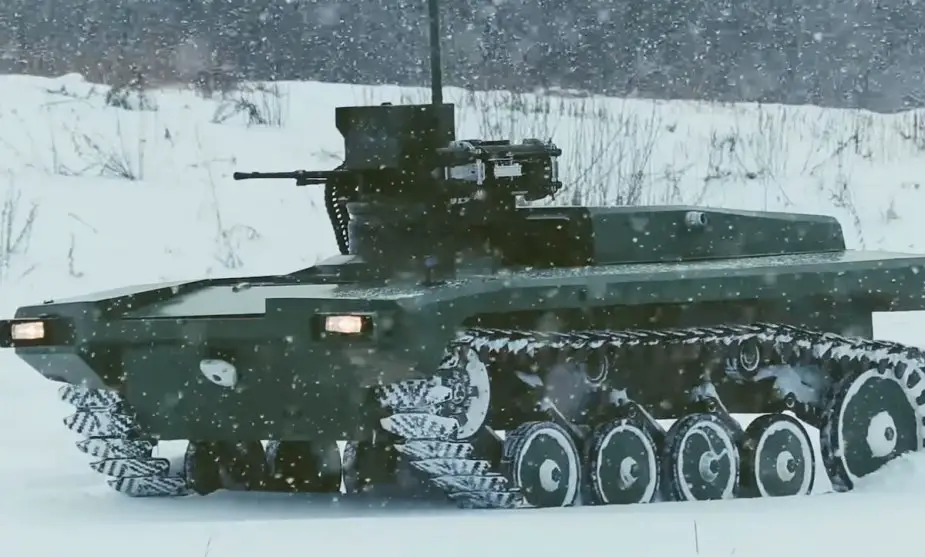Russia’s newest experimental unmanned ground vehicle (UGV) Marker has run 30 km over rugged terrain in autonomous mode, according to the press department of the Foundation of Advanced Studies (FPI).
Follow Army Recognition on Google News at this link

The Marker UGV during testing in December 2019 (Picture source: Advanced Research Foundation)
“The robot’s route was laid through unprepared territory that comprised forest and steppe garmented by snow. The UGV’s autonomous control system received the plan of the route and drove the platform to the destination point using the integrated neural network-based algorithms,” said the press department, adding that the autonomous control system allows the vehicle to avoid any ground obstacles.
The UGV is active during 48 hours on surfaced roads and during up to 24 hours in rugged terrains. The next stage of the trials will see the Marker covering 50 km, 100 km, and 200 km distances.
Previously, the servicemen of Russia’s Central Military District (TsVO) operated the Marker UGV during an exercise at the Chebarkul range.
After having already been tested for its maneuvering, tracking and firing capabilities, the Marker has also demonstrated its capability to launch a group of small reconnaissance unmanned aerial vehicles (UAVs) to perform tasks individually or together as a group via a cluster launch module. The Marker combat platform will indeed be optionally equipped with "kamikaze" type drones, Vitali Davydov, director of the Scientific and Technical Council of the Russian Foundation for Advanced Research Projects, said. Its design and testing will be completed around 2021. These are explosive-laden drones that destroy targets by crashing into them, adds Davydov. The Marker automatically launches a large number of drones. Each one can operate alone or in a group. This variant of the Marker was tested on 25 July 2019 at the Magnitogorsk test site of robotic systems and complexes (MIP RSK).
Marker is designed to be modular, with open information architecture. One configuration for the testbed arms it with a Kalashnikov-produced machine gun and anti-tank grenade launchers. More armament combinations may be expected to be tested. What deserves to be observed in the video is the way the turret on the robot tracks a target with the rifle carried by the infantryman. In an official statement from ARF, the agency said the Marker is designed to work “in pair with a fighter, receiving target designation from the sight of his weapon,” or be controlled remotely. So, the Marker would shoot only after the accompanying infantryman has validated the target. But it could operate autonomously if programmed to do so.
A modular multispectral vision and data processing system, featuring neural network algorithms, supports autonomous operations. Other mission systems include a laser warning system, thermal sensors, day/night infrared (IR) cameras, laser rangefinder, target detection, early warning system, identification, and tracking equipment. This generates a new way of cooperation between man and robot where AI-powered sensors take aim and the human checks in before firing. It turns infantry into spotters for robots that will progress on the path of autonomy. ARF clearly sees the Marker as a learning tool, saying “the evolution of combat robots is on the path of increasing the ability to perform tasks in autonomous mode with a gradual reduction in the role of the operator."
© Copyright 2021 TASS / Army Recognition Group SPRL . All rights reserved. This material may not be published, broadcast, rewritten or redistributed.
















